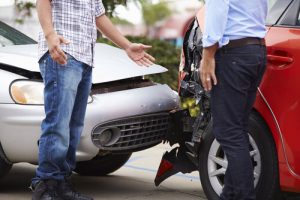Car accidents are a frequent and distressing occurrence that can have profound effects on individuals, families, and communities. From minor Dania Beach car accident lawyer incidents to catastrophic collisions, these accidents often result in significant physical, emotional, and financial consequences. To address this pressing issue, it’s crucial to understand the causes, effects, and effective prevention strategies associated with car accidents.

Understanding Car Accidents
Car accidents occur due to a variety of factors, often involving a combination of driver behavior, environmental conditions, and vehicle-related issues. Here’s a breakdown of some common causes:
- Distracted Driving: One of the most prevalent causes of car accidents today is distracted driving. Activities such as texting, talking on the phone, or adjusting radio settings divert attention away from the road, increasing the likelihood of a crash.
- Speeding: Excessive speed reduces a driver’s ability to respond to sudden hazards. Higher speeds result in longer stopping distances and greater impact forces during collisions, making accidents more severe.
- Driving Under the Influence (DUI): Alcohol and drugs impair cognitive functions and motor skills. Driving under the influence significantly raises the risk of accidents by affecting a driver’s judgment and reaction times.
- Adverse Weather Conditions: Rain, snow, fog, and ice can make roads slippery and reduce visibility. Drivers often struggle to adapt their driving behavior to these conditions, leading to a higher incidence of accidents.
- Mechanical Failures: Vehicle malfunctions, such as brake failures or tire blowouts, can lead to loss of control. Regular maintenance and timely repairs are essential to prevent such issues.
- Fatigue: Driver fatigue impairs concentration and reaction times. Falling asleep at the wheel or driving while extremely tired can result in serious accidents.
- Aggressive Driving: Reckless behaviors such as tailgating, weaving through traffic, and ignoring traffic signals contribute to dangerous driving conditions and increase the likelihood of accidents.
Impact of Car Accidents
The impact of a car accident can be extensive, affecting various aspects of life:
- Physical Injuries: Injuries from car accidents can range from minor cuts and bruises to severe conditions like broken bones, head trauma, and spinal cord injuries. The severity of injuries often depends on the accident’s intensity and the safety measures in place.
- Emotional and Psychological Effects: Car accidents can lead to significant emotional and psychological distress. Survivors and their families may experience anxiety, depression, and post-traumatic stress disorder (PTSD). The emotional impact can be long-lasting and affect daily life.
- Financial Costs: The financial burden of car accidents can be considerable. Expenses include medical bills, vehicle repairs, and legal fees. Additionally, individuals may face loss of income due to injuries or recovery time, further straining financial resources.
- Legal Consequences: Car accidents can lead to legal issues, particularly if negligence or traffic violations are involved. Legal proceedings may result in fines, penalties, or even imprisonment, depending on the circumstances and severity of the accident.
Prevention Strategies
Implementing effective strategies to prevent car accidents is crucial in reducing their frequency and impact. Here are some key prevention measures:
- Practice Safe Driving: Adhere to traffic laws, avoid distractions, and never drive under the influence. Using seat belts and properly securing children in car seats are fundamental practices for safety.
- Regular Vehicle Maintenance: Ensure that vehicles are regularly inspected and maintained to prevent mechanical failures. Routine checks of brakes, tires, lights, and other critical components are essential for safe driving.
- Stay Alert and Rested: Avoid driving when fatigued. Ensure adequate rest before driving, and take breaks during long trips to prevent drowsy driving.
- Adapt to Weather Conditions: Adjust driving behavior according to weather conditions. Reduce speed, increase following distances, and use headlights appropriately in poor visibility conditions.
- Promote Public Education: Support and participate in public education campaigns that raise awareness about the dangers of distracted driving, DUI, and other risky behaviors. Education can help foster a culture of safety on the roads.
- Utilize Advanced Technologies: Take advantage of modern vehicle safety features such as automatic emergency braking, lane departure warnings, and adaptive cruise control. These technologies can enhance driving safety and reduce the risk of accidents.
- Advocate for Improved Infrastructure: Support initiatives aimed at improving road design, signage, and traffic control measures. Better infrastructure can contribute to safer driving conditions and reduce the risk of accidents.
Conclusion
Car accidents are a significant issue that affects millions of people every year. By understanding their causes, recognizing their consequences, and implementing effective prevention strategies, we can work towards reducing the frequency and severity of these incidents. Promoting safe driving practices, maintaining vehicles properly, and supporting public education and infrastructure improvements are essential steps in creating a safer driving environment for everyone.
